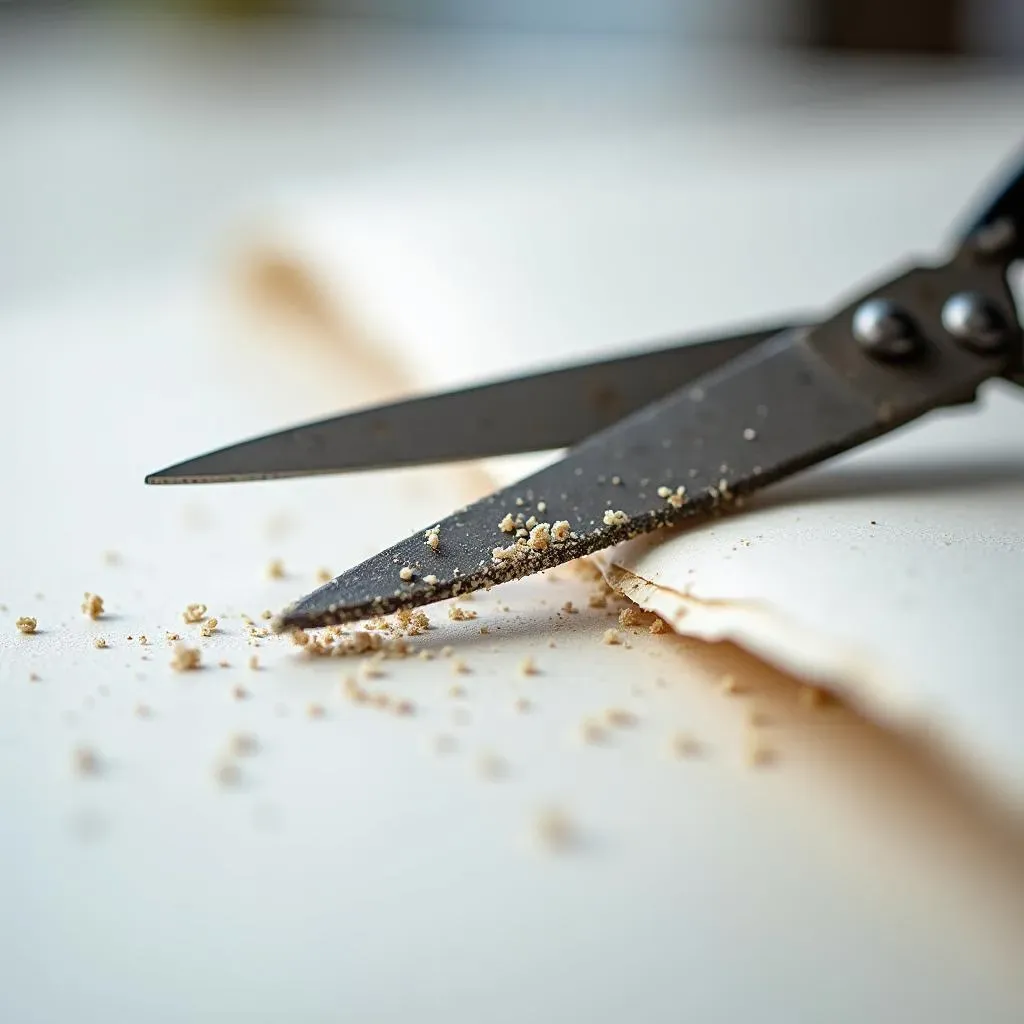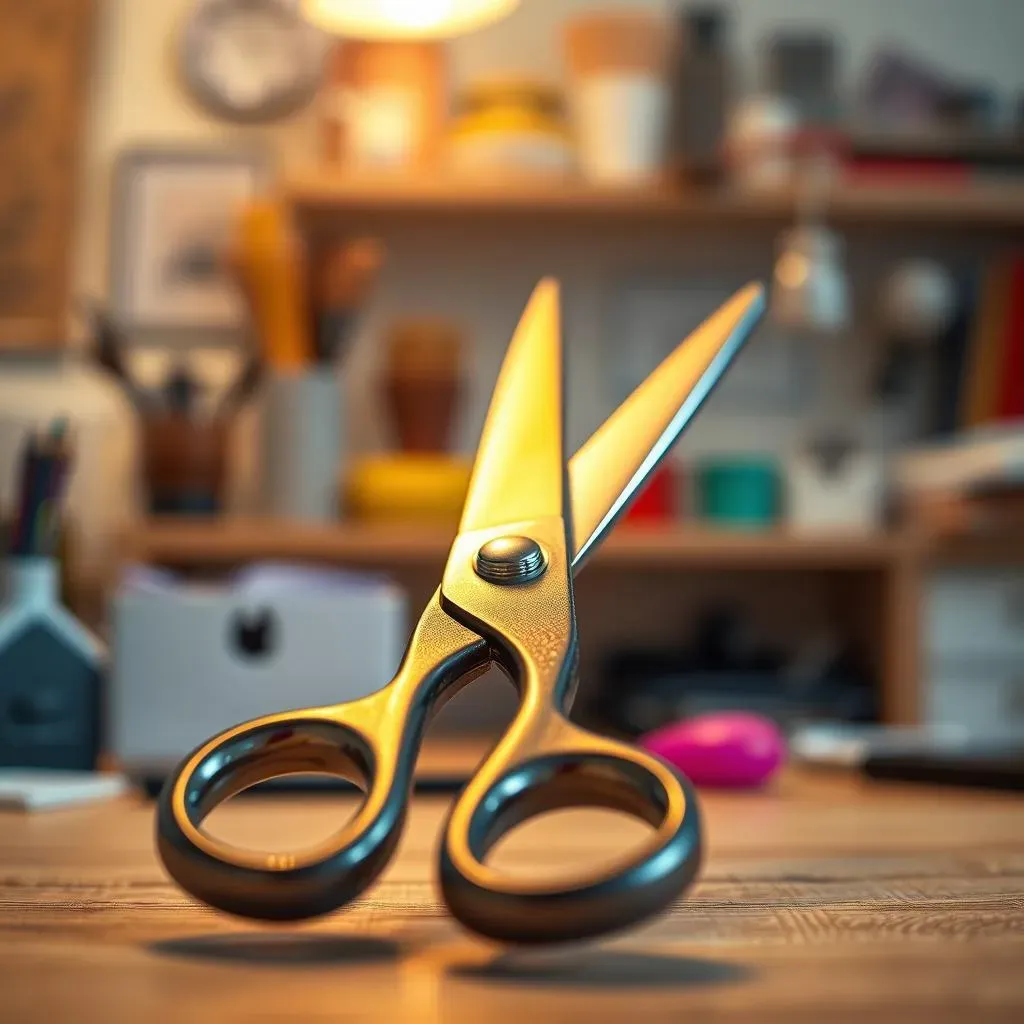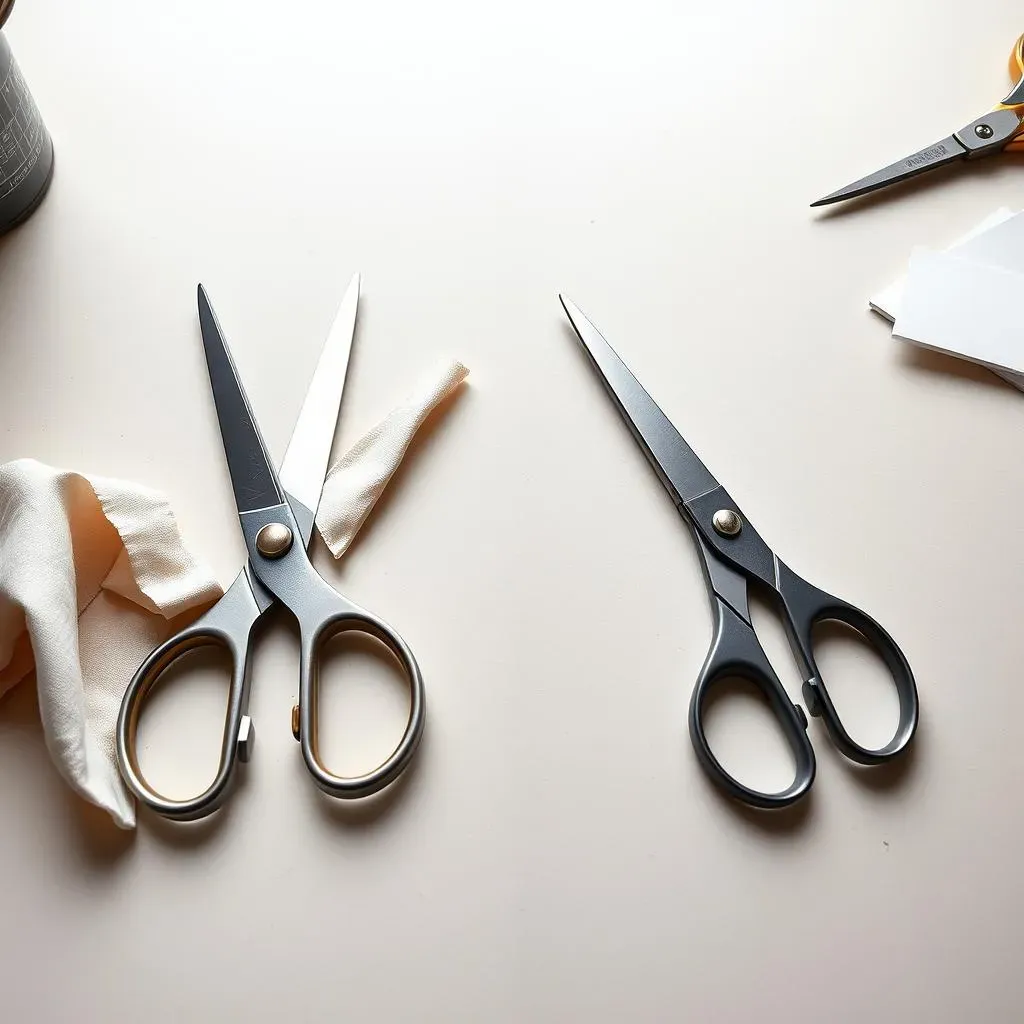Table of Contents
Have you ever wondered, "Does cutting paper dull scissors?" It's a question many crafters, sewists, and even casual paper users ponder. We often hear the advice to keep our fabric scissors solely for fabric, but is this just an old wives' tale, or is there real science behind it? This article will explore the fascinating relationship between paper, scissors, and their sharpness. We'll examine the microscopic interactions between paper fibers and scissor blades, revealing why paper can indeed accelerate blade dulling. You'll learn about the different types of paper and how their composition affects scissor wear. We'll also look at the best practices for preserving the sharpness of your beloved scissors, including simple techniques to prolong their life. Finally, we'll discuss the importance of using the right tool for the job, highlighting the differences between fabric scissors and paper shears. By the end, you'll have a clear understanding of why the question "does cutting paper dull scissors" matters, and how you can keep your scissors sharp and ready for any project. Let's dive into the world of sharp blades and paper cuts – literally!
Does Cutting Paper Dull Scissors? The Science Behind It
Does Cutting Paper Dull Scissors? The Science Behind It
The Abrasive Nature of Paper
So, you're curious about why cutting paper seems to dull scissors faster than, say, slicing through butter? It's not just about the act of cutting; it's about the material you're cutting. Paper, unlike fabric, isn't a soft, yielding substance. It's made of plant fibers, but those fibers are often treated with fillers and coatings to improve its texture and strength. These additives, which include things like clay and calcium carbonate, are tiny, abrasive particles. When your scissor blades slice through paper, they're not just cutting fibers; they're also grinding against these microscopic bits of grit.
Think of it like sanding metal with sandpaper. The sandpaper, with its rough surface, wears down the metal over time. Similarly, the abrasive particles in paper create friction and tiny scratches on the blades of your scissors. These tiny scratches, while individually insignificant, accumulate with each cut, gradually dulling the once-sharp edge. It's a slow process, but consistent use on paper will noticeably affect your scissors' performance. For more tips on paper cutting techniques, check out our guide on how to do paper cutting.
Material | Abrasiveness | Effect on Scissors |
|---|---|---|
Soft Fabric | Low | Minimal dulling |
Paper | Medium-High | Moderate to significant dulling |
Cardboard | High | Rapid dulling |
Blade Geometry and Paper Cutting
The shape of your scissor blades also plays a role in how quickly they dull when cutting paper. Fabric scissors are often designed with a slightly curved blade, perfect for smoothly gliding through fabric fibers. This curve helps the blades to "bite" into the material, making clean cuts with minimal friction. However, this same curve can be less effective when cutting paper. The paper's relatively flat surface and the abrasive particles mean the blades tend to slide rather than cut cleanly, leading to increased friction and faster dulling.
Paper scissors, on the other hand, are usually designed with sharper, straighter blades. This geometry allows for more efficient cutting of paper, reducing friction and minimizing damage to the blades. While you can use fabric scissors on paper, you'll likely notice a difference in how quickly they lose their edge. To learn more about the different types of paper you might be cutting, explore our article on types of paper cutting. Choosing the right scissors for the job is key to maintaining their sharpness.
- Fabric scissors: curved blades, designed for fabric
- Paper scissors: straight blades, designed for paper
- Multi-purpose scissors: a compromise, but may dull faster
Protecting Your Scissors: Best Practices for Paper Cutting
Protecting Your Scissors: Best Practices for Paper Cutting
Choosing the Right Scissors
First things first: Don't use your precious fabric scissors for paper! It's tempting, especially if you're in a hurry, but those finely honed blades are designed for delicate fabrics, not the abrasive grit found in paper. Investing in a good pair of paper scissors is a small price to pay for preserving your fabric scissors. Look for scissors specifically designed for paper cutting; they often have sharper, straighter blades better suited for the task. For inspiration on different paper cutting projects, check out our guide on paper cutting cards.
Think of it like this: you wouldn't use a delicate pastry brush to scrub a pan, right? The same principle applies to your scissors. Using the wrong tool for the job not only damages the tool but also impacts the quality of your work. A sharp pair of paper scissors will make your paper cutting projects much easier and more precise. Remember, a little investment in the right tools goes a long way in protecting your more expensive scissors.
- Invest in dedicated paper scissors.
- Avoid using fabric scissors on paper.
- Consider the type of paper you're cutting (thicker paper may require heavier scissors).
Cleaning and Maintenance
Even with the right scissors, regular cleaning is crucial for maintaining sharpness. Paper leaves behind tiny fibers and bits of filler, which can accumulate on the blades and interfere with their cutting ability. After each paper cutting session, take a moment to wipe down the blades with a soft cloth. A little bit of preventative maintenance goes a long way in keeping your scissors sharp. For more in-depth information on maintaining your tools, check out our post on essential paper cutting tools.
Think about it like this: if you consistently use a knife without cleaning it, bits of food will stick to the blade, making it dull and less effective. The same logic applies to your scissors. Regular cleaning removes debris that can impede the smooth movement of the blades, preventing unnecessary wear and tear. A quick wipe-down can significantly extend the lifespan of your scissors.
Cleaning Method | Frequency |
|---|---|
Wipe with a soft cloth | After each use |
More thorough cleaning (with mild soap and water) | Once a week or as needed |
Sharpening Your Scissors
Despite your best efforts, your scissors will eventually become dull. This is completely normal! However, you don't have to throw them away. Regular sharpening is essential for maintaining the performance of your scissors, regardless of what you cut with them. There are many ways to sharpen scissors, from professional sharpening services to DIY methods using honing steels or sandpaper. Learning how to sharpen your scissors is a valuable skill that will save you money and keep your tools in top condition. For ideas on paper cutting designs, you can visit our paper cutting design page.
Don't be afraid to seek professional help if you're unsure how to sharpen your scissors. A professional sharpener can restore your scissors to their former glory, ensuring they cut cleanly and efficiently for years to come. Investing in professional sharpening is often cheaper than replacing your favorite pair of scissors, especially if they're high-quality.
Different Scissors for Different Jobs: Paper vs. Fabric
Different Scissors for Different Jobs: Paper vs. Fabric
Different Scissors for Different Jobs: Paper vs. Fabric
Think of it like this: you wouldn't use a butter knife to saw through a log, would you? Similarly, using the wrong type of scissors for a given material leads to frustration and dull blades. Fabric scissors, with their gently curved blades, are designed to glide through fabric fibers. The curve helps them to slice through the material with minimal friction and resistance. However, this design isn't ideal for paper. The relatively flat, often abrasive surface of paper causes the blades to slide and scrape instead of cleanly cutting, which leads to quicker dulling.
Paper scissors, on the other hand, typically have sharper, straighter blades. This design allows for more precise cutting and reduces friction against the paper's surface. They're made to handle the abrasive nature of paper more effectively, preserving their sharpness for longer. For those intricate paper cutting projects, you might want to check out our guide on mastering paper cutting techniques. Choosing the right tool is half the battle!
- Fabric scissors: Designed for smooth cuts through soft materials. Curved blades minimize friction.
- Paper scissors: Designed for precise cuts through paper. Straight blades minimize friction against paper's surface.
- Multi-purpose scissors: A compromise, but often lack the precision or durability of specialized scissors.
Using the correct type of scissors not only protects your tools but also improves the quality of your work. Imagine trying to cut a delicate piece of silk with blunt, heavy-duty scissors – disaster! Similarly, using fabric scissors on thick cardboard will quickly dull the blades, rendering them useless for their intended purpose. The best way to ensure your scissors stay sharp is to use them only for their designed purpose. For more tips on choosing the right tools, take a look at our article on essential paper cutting tools.
It's a small investment to buy a dedicated pair of paper scissors, but it’s one that will save you money and frustration in the long run. You'll find that your projects will look much neater and more professional, and your high-quality fabric scissors will remain sharp and ready for use when you need them. A little planning and investment in the right tool can make all the difference!
Scissors Type | Best Use | Blade Shape |
|---|---|---|
Fabric Scissors | Fabric, thread, lightweight materials | Slightly curved |
Paper Scissors | Paper, cardstock, thin cardboard | Straight |